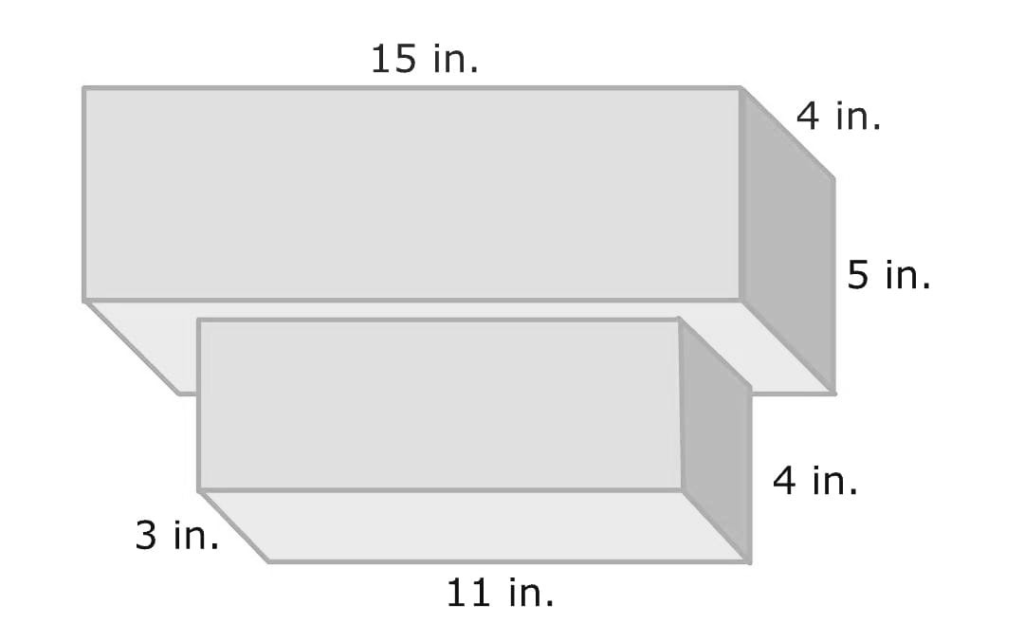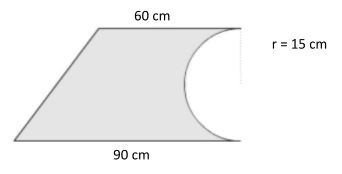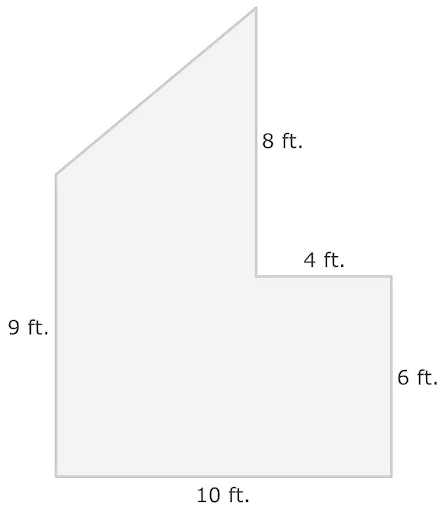Introduction
In composing shapes, we know that the different shapes of Geometry are squares and rectangles, circles and triangles, trapezoids, rhombuses, stars, hexagons, octagons, and ovals. By making the partition of given shapes we can make a Partitioning shape. Now we are discussing partitioning shapes, which means we are making the partition of given shapes into different small shapes from large shapes. If we have a partitioned shape that consists of a circle and two rectangles, we can make a partition of this shape to get different geometric shapes. For example, we can make a circle from a composite shape by partitioning it into a rectangle and a circle. For this, we can easily break out kite into a circle shape then the shape that we will get from a kite which is a complex will produce a partitioning shape circle. Partitioning shapes are those shapes that are partitioned from composite shapes to two or more geometric shapes. It may refer to any geometric shapes that can be sorted out to break into more than one composite shape that exists in Geometry. Some examples of Partitioning shapes to form the shapes are square and triangle, triangles and circles, etc. Let’s learn about partitioning shapes in detail in this section.
Definition
A shape that can be broken out into more than one of shapes like circles, squares, triangles, stars, ovals, etc, is said to be a decomposite shape or partitioning shape.
The partition shape is a shape in which complex shapes break into a required shape that will be a Unique and defined shape as well. These shapes can be made up by decomposition of Composite shapes
like rectangles, kites, cones, etc. A partition shape is made up by breaking the composite shape into different shapes.
Let us learn about partitioning shapes and how they can be determined.
For example,
Below are some shapes that represent the concept of Partitioning shapes.

We can see that in shape 1 if we break out the shape into two pieces we will get one rectangle and one square. It means that we are doing the partition of shapes into two geometrical shapes rectangle and square.
For shape 2, which is a complex shape because we can break out the given shape into two different shapes in rectangle and triangle by partition.
For shape 3, if we break out the shape that is star into pieces we will get two triangles. It means that we are doing partition of shape into of shapes into two triangles.
For shape 4, if we break out the shape into pieces we will get two right triangles and one rectangle. It means that we are doing partition of shapes into of shapes circles and square.
Area of Partitioning Shapes
The area of Partitioning shapes is a partition of basic geometric shapes like circles, squares, triangles, stars, ovals, etc. To make a partition of any given shape, we must know to calculate the area of some basic shapes like squares, triangles, rectangles, ovals, etc. Let’s learn more about the area of Partitioning shapes through the example
For example,
Make the partition of a given shape and find the area of these partitioning shapes separately?

Solution :
By partition, we will break out the given shape into different geometric shapes. For this, we draw a line to make the partition of the given shape into different shapes. So, we have

Now we have two rectangles. We will find the area of each rectangle by multiplying length and width
For rectangle A,
We have a length is 9 yards and a width is 6 yards
Area of Rectangle A=length ×width
Area of Rectangle A= 9 × 6
Area of Rectangle A = 54 yd2
Now for rectangle B,
We have a length is 6 yards and width is 8 yards
Area of Rectangle B=length ×width
Area of Rectangle B= 6 × 8
Area of Rectangle B = 48 yd2
Now, we will find the area of a right triangle C.
We know that area of a right triangle is
Area of right triangle C = $\frac{1}{2}$ × base × height
Area of right triangle C = $\frac{1}{2}$ × 23 × 9
Area of right triangle C = 103.5
Hence, the area of right triangle C is 103.5 yd2.
Result :
We make the partition of the given shape into two rectangles and the right triangle named is as a rectangle, rectangle B and right triangle find their areas separately.
How to measure
We have some steps to find the area of a partitioning shape
1: Make the Partition of a given shape into different geometric shapes.
2: Find the area of every partitioned geometric shape separately.
3: Write the answer in square units.
For example,
Make the partition of a given shape and find their areas separately?

Solution :
Given shape is a complex shape, we have to make the partition of a given shape.
For this, we will break out the given shape into two right triangles and one square equally. The square has two equal sides of 4 cm length and two right triangles with a 4 cm base and 5 cm hypotenuse of 5cm each.

We have two right triangles, right triangle A and right triangle B.
Now, we will find the area of right triangle A.
We know that area of a right triangle is
Area of right triangle A = $\frac{1}{2}$ × base × height
Area of right triangle A = $\frac{1}{2}$ × 4 × 5
Area of right triangle A = 10
Hence, the area of right triangle A is 10 cm2.
Next, we will find the area of right triangle B.
We know that area of a right triangle is
Area of right triangle B = $\frac{1}{2}$ × base × height
Area of right triangle B = $\frac{1}{2}$ × 4 × 5
Area of right triangle B = 10
Hence, the area of right triangle B is 10 cm2.
Lastly, we have to find the area of square C.
we have four sides and these sides are equal because the shape is square.
So the area of square= (sides )²
Put the any sides in the above formula
The area of square C = (4)2
The area of square C = 16 cm2
Hence, the area of square C is 16 cm2.
Result :
We make the partition of the given shape into two right triangle named right triangle A, right triangle B, and square C also find their areas separately.
Volume of Partitioning Shapes
To find the volume of Partitioning shapes, we need to identify the different shapes that are made from partition. This partition allows working out the volume of each partition shape independently. For composite prisms, where the bases are a composite shape, the area of the bases is the sum of the areas of the partition shape that it is made of. The volume of the prism is then given by multiplying the base area by the height of the prism.
Let’s learn about the volume of Partitioning shapes through some examples.
For example,
Make the partition of a given shape and find their volumes separately?

Solution :
Given shape is rectangular prism and we know that formula for the volume of a rectangular prism is:
Volume is the product of length, width, and height
So,
V = l × w × h
( Where l is the length, w is the width and h is the height of the prism )
For partitioning, we will break out the shape into two parts rectangular prisms as large prisms and small prisms.

Now, we will find the volume of each prism. First, we will find the volume of a large prism
We know that from shape length is 15 inches, width is 4 inches, and height is 5 inches.
Now by the formula of volume
V = l × w × h
V = 15 × 4 × 5
V = 300
Hence, the volume of the large prism is 300 cubic inches.
Next, we will find the volume of the small prism
We know that from shape length is 11 inches, width is 3 inches, and height is 4 inches.
Now by the formula of volume
V = l × w × h
V = 11 × 3 × 4
V = 132
Hence, the volume of the large prism is 132 cubic inches.
Result :
We make the partition of the given shape into two prisms, large prisms, and small prisms, and find their volumes separately.
How to measure
We have some steps to find the volume of a partitioning shape.
1: Make the partition of the given shape into different geometric shapes.
2: Find the volume of every partitioning geometric shape separately.
3: Write the answer in cube units.
Solved Examples :
Example 1 :
What is the partition of the given shape and the area of the shaded region?

Solution :
The partition of the given shape is two triangles simple A and B. We have to find the area of the shaded region between these partitioning shapes.

To find the area of a figure with a hole in it, subtract the area of triangle A
from the area of triangle B.
Area of a triangle B = $\frac{1}{2}$ x base × height
From the above shape, we know the base and height of triangle B, base and height are 18 km.
Putting the values in the above formula
Area of a triangle B = $\frac{1}{2}$ x 18 × 18
Area of a triangle B = 162 square kilometers
Hence, The area of triangle B is 162 square kilometers.
Next, find the area of triangle A, Base is 31 km and height is 28 km
Area of a triangle A = $\frac{1}{2}$ x base × height
Area of a triangle A = $\frac{1}{2}$ x 31 × 28
Area of a triangle A = 434 square kilometers
Hence, The area of triangle B is 434 square kilometers.
Finally, subtract the triangle Area A from the triangle B to find the area of the shaded region.
The area of the shaded region = Area of triangle A – Area of a triangle B
The area of the shaded region = 434 162
The area of the shaded region = 272
The area of the shaded region is 272 square kilometers.
Result :
We have calculated the Area of all the partition shape i.g Right triangles and find the shaded area between the partitioning shapes.
Example 2 :
What is the partition of a given shape and find the area of every partition shape separately?

Solution :
We will make the partition of the given shape into a right triangle, rectangle , and one semicircle as shown in the figure below

Next, we have to find the area of each partition shape separately.
For this first, we will calculate the area of the Right triangle.
We know that area of the Right triangle is equal to
A = $\frac{1}{2}$ × base × altitude
Putting the values of base and altitude in the above formula, we will get the area of the Right triangle.
A = $\frac{1}{2}$ × 30 × 40
A= 600 cm²
Secondly, we will calculate the area of the Rectangle.
We know that area of the Rectangle is equal to
A = Lenght × width
Putting the values of length and width in the above formula, we will get the area of the Rectangle
A = 60 × 40
A= 2400 cm²
Now, we will calculate the area of the semicircle.
We know that area of the semicircle is equal to
A = 1/2 π × r²
A= 1/2 × 3.1415 × (15)²
A= 353.42 cm²
Result :
We have calculated the Area of all the partition shapes i.g Right triangle, rectangle, and semicircle
Example 3 :
What is the partition of given shapes and find the volume of each partitioning shape separately?

Solution :
For the area of partitioning shape, first, we will make partition of this complex shape into geometric shapes so, we can show that by figure, We have broken out the given complex shape into two rectangles

and one right triangle. Firstly, we will find the area of the Right triangle.
From shape A, we know that base is 6 and 5 in height So,
The area of a right triangle is = 1/2 base × height
Area of shape A= 1/2 × 6 × 5 = 15
Hence, the area of the right triangle is 15 ft²
Secondly, we have rectangle B, for this, we have length 6 and width 9
So the area of rectangle B will be
Area of Rectangle B= 9×6
Area of Rectangle B= 54
Hence, the area of Rectangle B is 54 ft²
Now, we have the last rectangle C, for this, we have length 4 and width 6
So the area of rectangle C will be
Area of Rectangle C= 4×6
Area of Rectangle C= 24
Hence, the area of Rectangle C is 24 ft²
Result:
We make the partition of the given shape into two rectangles A and B and one right triangle also find their volumes separately.
Example 4 :
Find the partition of the given shape then find the volume of each shape that will be obtained by partition?

Solution :
Given shape is rectangular prism and we know that formula for the volume of a rectangular prism is:
Volume is the product of length, width, and height
So,
V = l × w × h
( Where l is the length, w is the width and h is the height of the prism )
To find the volume of a given shape, we will break out the shape into two parts as rectangular prisms.


Now, find we will find the volume of each Prism that is obtained by partition. First, we will find the volume of a large prism
We know that from shape length is 11 centimeters, width is 4 centimeters, and height is 6 centimeters.
Now by formula of volume
V = l × w × h
V = 11 × 4 × 6
V = 264
Hence, the volume of the large prism is 264 cubic centimeters.
Next, we will find the volume of the small prism.
We know that from shape length is 2 centimeters, width is 2 centimeters, and height is 5 centimeters.
Now by formula of volume
V = l × w × h
V = 2 × 2 × 5
V = 20
Hence, the volume of the small prism is 20 cubic centimeters.
Result :
We make the partition of given the shape into two prisms small are large and find their volumes separately.
Example 5 :
For the given shape, we have the Partition of shape into 4 equal squares.
Find the area of the square?

Solution :
We know that a given complex shape by breaking out we have five sides and these sides are equal because the shape is square.

So the area of square= (sides )²
Put the side length in the above formula
The area of square= (4)²
The area of square= 16
Hence, The area of the square is 16 cm2
Example 6 :
What is the partition of a given shape and find the area of shapes that are obtained by the partition of a given shape?

Solution :
By partitioning the shape, we will make the partition of the shape into geometric shapes. For this, we draw a line for the partition of the given shape into different geometric shapes. By Partitioning, we have two rectangles and one triangle. We will find the area of each rectangle by multiplying length and width and the area of the triangle by multiplying base and width.

For rectangle A,
We have length l=4 mm and width w=18 mm
Area of Rectangle A=length ×width
Area of Rectangle A= 4 × 18
Area of Rectangle A = 72 mm2
Now for rectangle B,
We have length l=5 mm and width w=10 mm
Area of Rectangle B=length ×width
Area of Rectangle B= 5 × 10
Area of Rectangle B = 50 mm2
Lastly, we will find the area of the Right triangle.
From shape C, we know that base is 19 and 14 in height.
So,
The area of a right triangle is = 1/2 base × height
Area of shape C= 1/2 × 19 × 14 = 133 mm².
Result :
We make the partition of the given shape into two rectangles A and B and one right triangle also find their areas separately.
Key Facts and Summary
- Partitioning shapes can be broken out by Partitioning into more than one of the shapes like circles, squares, triangles, stars, ovals, etc.
- Area of Partitioning shape is can be calculated by their fixed formulas after partitioning shapes.
- Decomposite shapes Or partitioning shapes are those shapes that are obtained by the partition of some different complex shape into two or more geometric shapes.
- We can measure the area and volume by following steps :
- By making the partition of given shapes into different geometric shapes.
- Finding the area and volume of Partitioning shape separately.
- If the dimensions of all the that are obtained by a partition are raised, the area of Partitioning shapes also increases.
- The area of Partitioning shape changes as it depends on the individual area of a geometric shape that is obtained by making the partition of given shapes which gets changed when the dimensions are increased or raised.
- We have a fixed formula to calculate the area of partitioning shapes.
Recommended Worksheets
2-D and 3-D Shapes Kindergarten Math Worksheets
Partitioning Shapes 1st Grade Math Worksheets
Shape Partitions (Rectangles and Circles) 2nd Grade Math Worksheets









